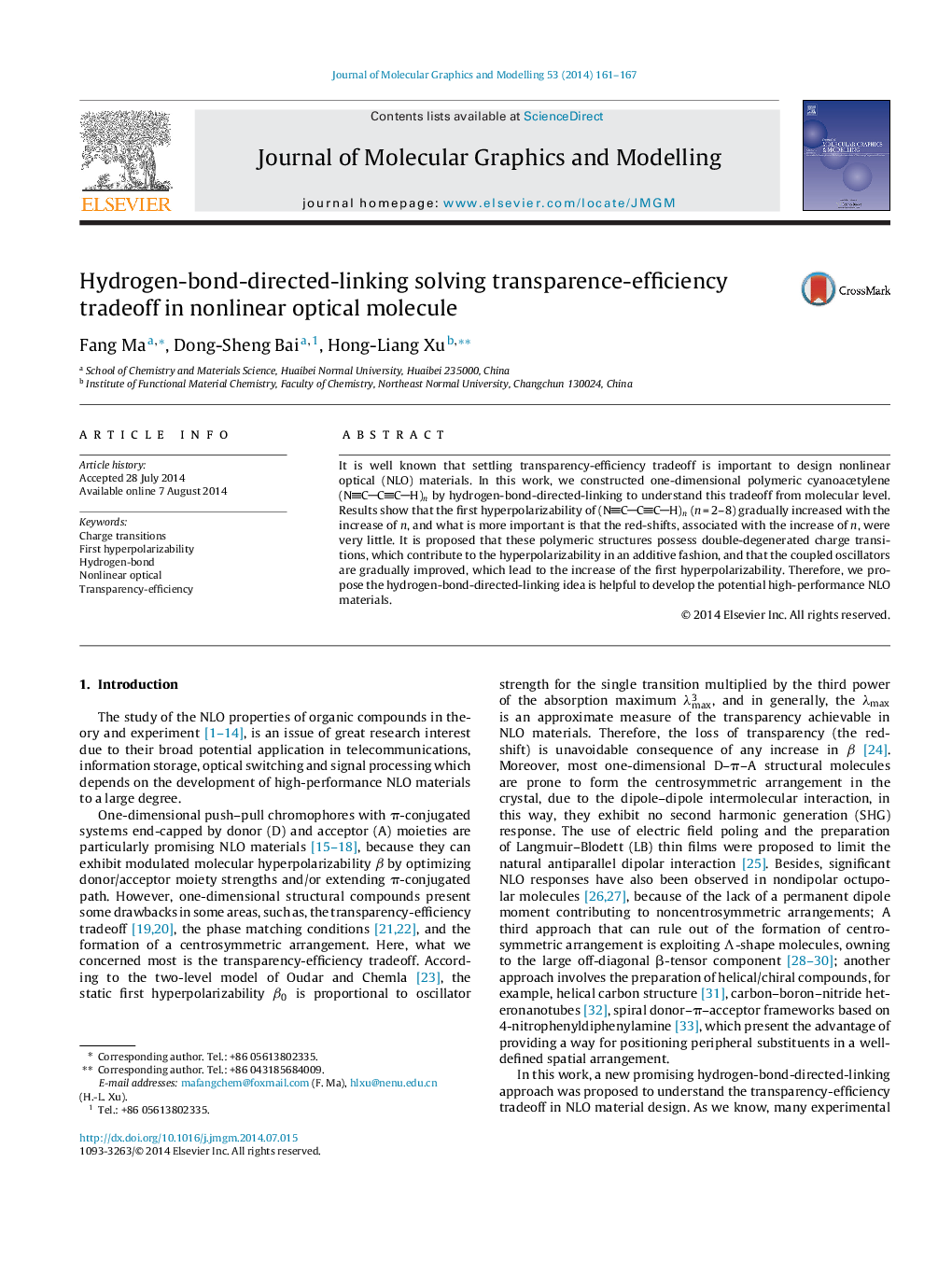| Article ID | Journal | Published Year | Pages | File Type |
|---|---|---|---|---|
| 443317 | Journal of Molecular Graphics and Modelling | 2014 | 7 Pages |
•One-dimensional polymeric structure by hydrogen-bond-directed-linking is constructed.•The transparency-efficiency tradeoff is modulated.•Double-degenerated charge transitions contribute to the hyperpolarizabilities in an additive fashion.
It is well known that settling transparency-efficiency tradeoff is important to design nonlinear optical (NLO) materials. In this work, we constructed one-dimensional polymeric cyanoacetylene (NCCCH)n by hydrogen-bond-directed-linking to understand this tradeoff from molecular level. Results show that the first hyperpolarizability of (NCCCH)n (n = 2–8) gradually increased with the increase of n, and what is more important is that the red-shifts, associated with the increase of n, were very little. It is proposed that these polymeric structures possess double-degenerated charge transitions, which contribute to the hyperpolarizability in an additive fashion, and that the coupled oscillators are gradually improved, which lead to the increase of the first hyperpolarizability. Therefore, we propose the hydrogen-bond-directed-linking idea is helpful to develop the potential high-performance NLO materials.
Graphical abstractAn attractive hydrogen-bond-directed-linking approach practically solves transparency-efficiency tradeoff and contributes to the development of potential high-performance NLO materials.Figure optionsDownload full-size imageDownload high-quality image (341 K)Download as PowerPoint slide
